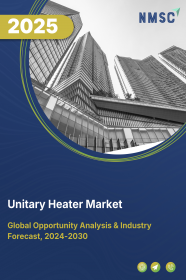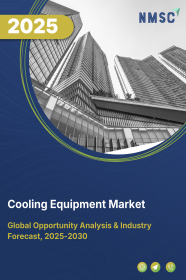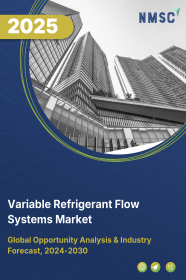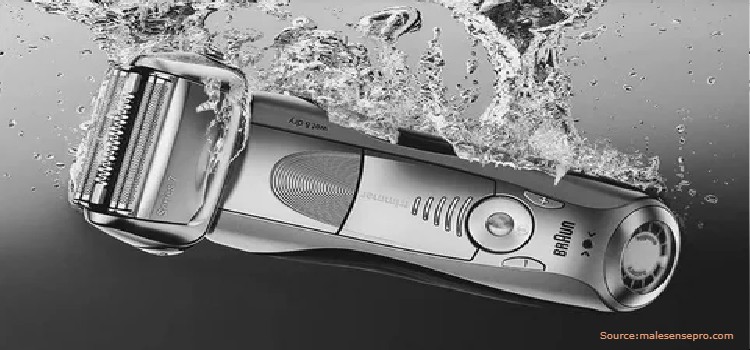
The Unitary Heater Market is segmented by Installation Type (Horizontal, Vertical, Suspended), by Product Type (Gas-Fired Unitary Heaters, Hydronic Unitary Heaters, Electric Unitary Heaters, & Others), by Mounting Type (Ceiling-Mounted Unitary Heaters, & others), by Capacity (Low Capacity (Up to 50,000 BTU), & others) by Efficiency (Standard Efficiency, High Efficiency, & Others), and End Users (Commercial, Residential, & others) – Global Opportunity Analysis and Industry Forecast 2025-2030
US Tariff Impact on Unitary Heater Market
Trump Tariffs Are Reshaping Global Business
Unitary Heater Industry Overview
The global Unitary Heater Market size was valued at USD 5.06 billion in 2024 and is predicted to reach USD 5.31 billion by the end of 2025. The industry is predicted to reach USD 6.78 billion by 2030 with a CAGR of 5.0% from 2026-2030.
The market is growing due to rising demand for energy-efficient HVAC systems, localized heating solutions, and increasing regulatory support for sustainable technologies. Businesses are focusing on cost reduction and environmental compliance, driving the adoption of advanced unitary heaters, that offer flexibility, easy installation, and energy savings for large spaces like warehouses and factories.
Government policies promoting decarbonization are encouraging the shift to electric unit heaters. However, high initial costs for advanced models can be a barrier, especially for smaller businesses. On the other hand, electrification trends and innovations in electric heating present significant growth opportunities for manufacturers.
Rising Demand for Energy-Efficient HVAC Systems Drives the Unitary Heater Market Growth
One of the most significant forces propelling the industry is the ever-increasing demand for energy-efficient HVAC systems. Businesses across commercial and industrial sectors are actively seeking ways to reduce operational costs and minimize their environmental footprint. Unit heaters, as standalone appliances for heating spaces, are continuously being innovated to offer higher efficiency levels.
For instance, Modine's refreshed Hot Dawg Unit Heaters series emphasizes enhanced performance and efficiency. This focus on efficiency is not just a trend but a fundamental driver, influencing purchasing decisions as organizations look for long-term cost savings and compliance with evolving energy regulations. The rising demand for energy-efficient solutions directly contributes to the market growth of unitary heaters, increasing the overall industry size.
The Need for Reliable and Independent Heating Solutions Boosts the Growth of the Market
The demand for reliable and standalone heating appliances is another crucial driver for the unitary heater sector. Unit heaters are specifically designed to provide heating for particular areas within a building, making them adaptable for diverse industrial and commercial environments.
Unlike centralized heating systems, they offer a localized approach, ensuring that heat is delivered where and when it's needed. This is particularly beneficial in large spaces like warehouses, factories, and retail areas where uniform heating from a central system might be inefficient. These standalone units, which can be powered by various sources like gas, electricity, or propane, offer flexibility and ease of installation, further boosting their appeal and driving market share within the broader HVAC equipment market. The ability to independently control heating in different zones also contributes to energy savings and operational efficiency.
Regulatory Support and Sustainability Initiatives Fueling the Market Growth
Supportive regulations and increasing emphasis on sustainability are significantly driving the adoption of advanced and energy-efficient heating technologies, including unitary heaters. Governments and industry bodies are promoting measures aimed at reducing energy consumption and carbon emissions in buildings. This creates a favourable environment for the adoption of more efficient unitary heaters and the development of greener heating solutions like electric unit heaters.
For example, the push towards building decarbonization highlights the potential role of electric heating options in reducing emissions. These regulatory trends and sustainability goals not only drive the current market growth but also shape the future trajectory of the industry, encouraging innovation and investment in environmentally friendly heating technologies.
High Initial Investment Costs Hinders the Market Expansion
The initial investment associated with advanced and highly efficient unitary heater technologies can act as a restraint on the market. While businesses recognize the value of energy savings and reduced operational costs, the upfront capital expenditure for newer, more sophisticated units can be a barrier, particularly for smaller businesses or those operating with tight budgets.
This factor can slow down the widespread adoption of cutting-edge technologies, even if they offer superior performance and efficiency in the long run. The perceived higher cost compared to traditional, less efficient heating solutions can influence purchasing decisions and temporarily restrain the market growth potential.
Rising Electrification and Innovation in the Unitary Heaters Creates Opportunities for the Market Growth
A significant opportunity for players in the market lies in the increasing trend towards electrification and the development of innovative electric heating technologies. As the world moves towards decarbonization and reducing reliance on fossil fuels, electric unit heaters are gaining prominence as a cleaner and more sustainable heating solution.
The successful startup of electric heater demonstration units showcases the growing interest and investment in this area. This shift presents a substantial growth potential for manufacturers who can develop and offer efficient, reliable, and cost-effective electric unitary heaters.
For instance, Combat Heating Solutions, in April 2023, they introduced Elite Pro Unit Heaters, designed for high energy efficiency and easy maintenance, suitable for both room-sealed and open-flued installations. By capitalizing on this transition, industry players can tap into a growing segment of the market driven by environmental concerns and the long-term benefits of electric heating.
Market Segmentation and Scope of the Study
The unitary heater market report is segmented on the basis of product type, installation type, mounting type, capacity, efficiency, and end users. By product type, the market is divided into gas-fired unitary heaters, electric unitary heaters, oil-fired unitary heaters, propane-fired unitary heaters, hydronic unitary heaters and others. Based on installation type, it is categorized into horizontal, vertical, and suspended unitary heaters. In terms of mounting type, the market is segmented into ceiling-mounted, floor-mounted, wall-mounted, and overhead unitary heaters. On the basis of capacity, the market is classified into low capacity (up to 50,000 BTU), medium capacity (50,000 to 100,000 BTU), and high capacity (over 100,000 BTU). Regarding efficiency, the market is divided into standard efficiency, high efficiency (up to 80% AFUE), and ultra-high efficiency (over 80% AFUE). Based on end users, the market is categorized into residential, commercial, and industrial sectors. Regional breakdown and analysis of each of the aforesaid segments include regions comprising North America, Europe, Asia-Pacific, and RoW.
Geographical Analysis
In North America, the demand for efficient and reliable heating solutions in commercial and industrial spaces is a significant driver. Factors such as the age of existing building stock and the need for zone heating in large facilities likely contribute to a substantial market size.
The emphasis on energy efficiency and potential regulatory incentives may also shape market trends towards more advanced and energy-saving unitary heaters.
Europe is anticipated to witness strong adoption of energy-efficient heating technologies driven by stringent environmental regulations and a strong push for decarbonization. The market trend towards electric heating solutions is likely to be prominent in this region, presenting growth potential for manufacturers offering such technologies.
The Asia-Pacific region, with its rapidly expanding industrial sector and growing number of commercial buildings, represents a significant growth potential for the unitary heater market demand.
The demand for cost-effective and reliable heating solutions to cater to varying climatic conditions across the region is expected to drive the industry size. While specific trends might vary by country, the increasing focus on energy efficiency is likely to become more important in the long run.
The Rest of the World region encompasses diverse markets with varying levels of industrialization and infrastructure development. The growth potential in these regions would likely be tied to economic development and the increasing adoption of modern heating solutions in commercial and industrial applications. Specific market trends and the overall market size would be highly dependent on local economic conditions and regulatory landscapes.
Strategic Innovations Adopted by Major Key Players
Key players in the global unitary heater industry, a vital component of the HVAC equipment market, are strategically focusing on innovation to capture greater market share and drive industry growth. A primary strategy involves enhancing energy efficiency, as demonstrated by Modine’s December 2024 launch of the refreshed Hot Dawg Unit Heaters series. This gas-fired series incorporates dimpled heat exchanger tubes, improving efficiency and reducing noise levels while offering usability and aesthetic upgrades. These advancements underscore Modine’s commitment to delivering high-performance heating solutions tailored for residential and light commercial applications.
In parallel, the industry is witnessing a significant shift towards electrification and sustainable technologies to align with global environmental goals. In April 2025, Lummus Technology marked a milestone with the successful startup of its SRT-e electric heater demonstration unit at its R&D center in Pasadena, Texas. This commercial-scale validation of the Short Residence Time (SRT) technology highlights Lummus’ efforts to reduce greenhouse gas emissions while ensuring the safety, reliability, and performance of its cracking heater solutions. This development signals a broader industry trend towards cleaner, low-carbon heating technologies, positioning key players to meet evolving regulatory and consumer demands.
Key Benefits
-
The report provides quantitative analysis and estimations of the market from 2025 to 2030, which assists in identifying the prevailing market opportunities.
-
The study comprises a deep dive analysis of the unitary heater market trends to depict prevalent investment pockets in the market.
-
Information related to key drivers, restraints, and opportunities and their impact on the market is provided in the report.
-
Competitive analysis of the players, along with their market share is provided in the report.
-
SWOT analysis and Porters Five Forces model is elaborated in the study.
-
Value chain analysis in the market study provides a clear picture of roles of stakeholders.
Unitary Heater Market Key Segments
By Installation Type
-
Horizontal
-
Vertical
-
Suspended
By Product Type
-
Gas-Fired Unitary Heaters
-
Hydronic Unitary Heaters
-
Electric Unitary Heaters
-
Oil-Fired Unitary Heaters
-
Propane-Fired Unitary Heaters
-
Others
By Mounting Type
-
Ceiling-Mounted Unitary Heaters
-
Floor-Mounted Unitary Heaters
-
Wall-Mounted Unitary Heaters
-
Overhead Unitary Heaters
By Capacity
-
Low Capacity (Up to 50,000 BTU)
-
Medium Capacity (50,000 to 100,000 BTU)
-
High Capacity (Over 100,000 BTU)
By Efficiency
-
Standard Efficiency
-
High Efficiency (Up to 80% AFUE)
-
Ultra-High Efficiency (Over 80% AFUE)
By End Users
-
Commercial
-
Residential
-
Industrial
By Region
-
North America
-
The U.S.
-
Canada
-
Mexico
-
-
Europe
-
The UK
-
Germany
-
France
-
Italy
-
Spain
-
Denmark
-
Netherlands
-
Finland
-
Sweden
-
Norway
-
Russia
-
Rest of Europe
-
-
Asia Pacific
-
China
-
Japan
-
India
-
South Korea
-
Australia
-
Indonesia
-
Singapore
-
Taiwan
-
Thailand
-
Rest of Asia Pacific
-
-
RoW
-
Latin America
-
Middle East
-
Africa
-
Key Players
-
Daikin Industries, Ltd.
-
Trane Technologies plc
-
Reznor HVAC Systems
-
Lennox International Inc.
-
Modine Manufacturing Company
-
Turbonics, Inc.
-
Johnson Controls International plc
-
Armstrong International, Inc.
-
Combat Heating Solutions
-
Mestek Inc.
-
Beacon Morris
-
Dunham-Bush
-
King Electric
-
Thermon
-
Sterling HVAC
REPORT SCOPE AND SEGMENTATION
|
Parameters |
Details |
|
Market Size in 2024 |
USD 5.06 billion |
|
Revenue Forecast in 2030 |
USD 6.78 billion |
|
Growth Rate |
CAGR of 5.0% from 2026 to 2030 |
|
Analysis Period |
2024–2030 |
|
Base Year Considered |
2024 |
|
Forecast Period |
2025–2030 |
|
Market Size Estimation |
Billion (USD) |
|
Growth Factors |
|
|
Countries Covered |
28 |
|
Companies Profiled |
15 |
|
Market Share |
Available for 10 companies |
|
Customization Scope |
Free customization (equivalent up to 80 working hours of analysts) after purchase. Addition or alteration to country, regional, and segment scope. |
|
Pricing and Purchase Options |
Avail customized purchase options to meet your exact research needs. |

















 Speak to Our Analyst
Speak to Our Analyst





















